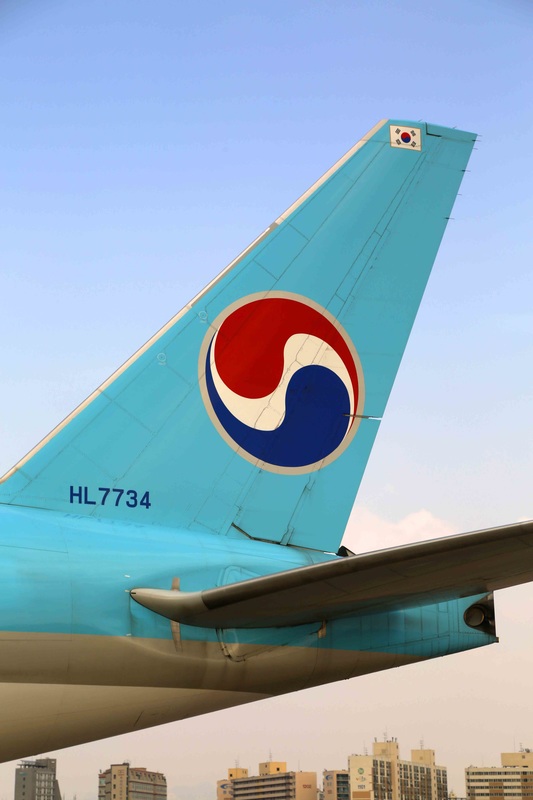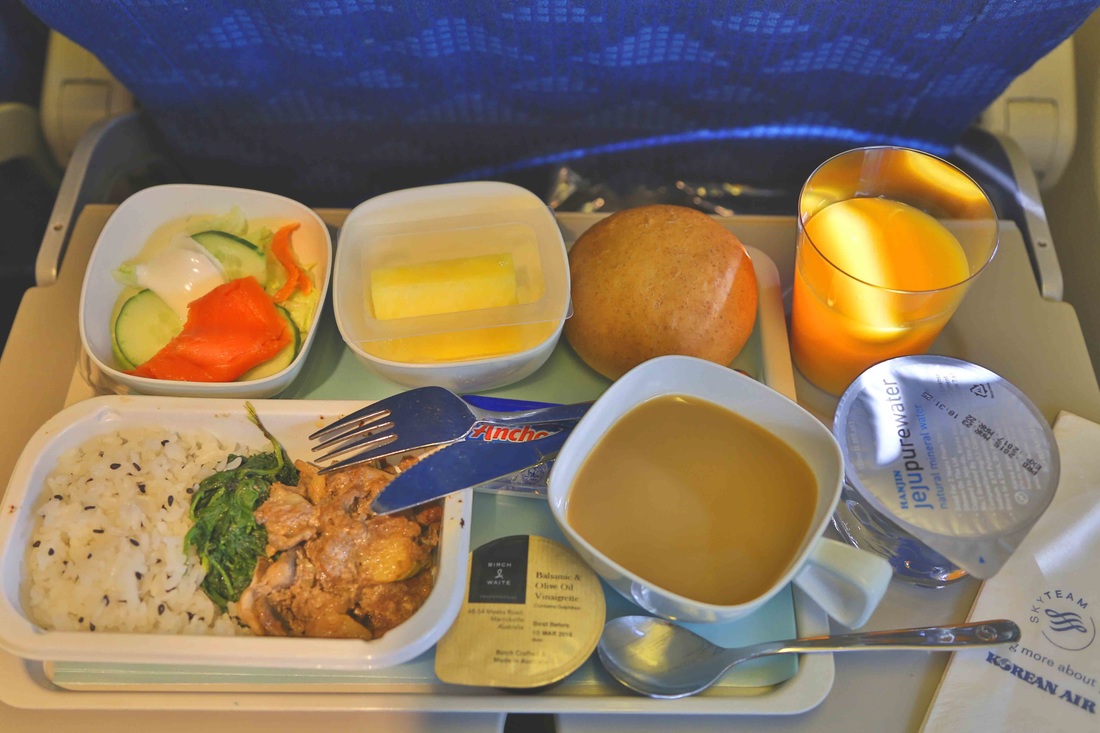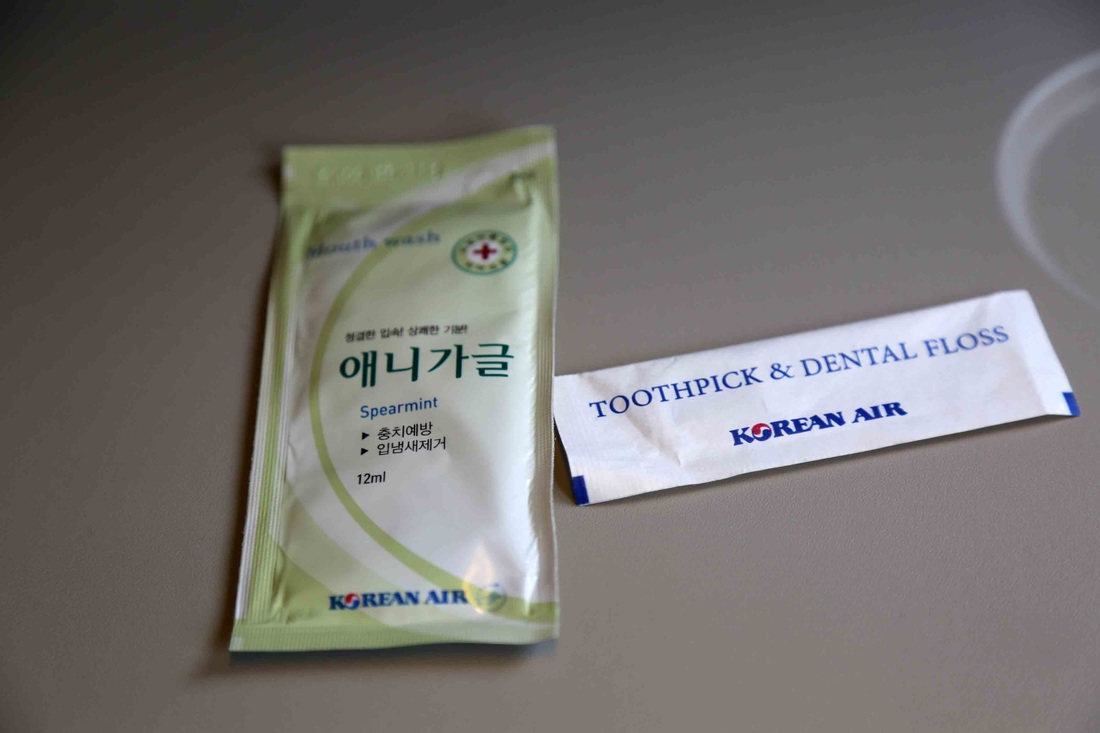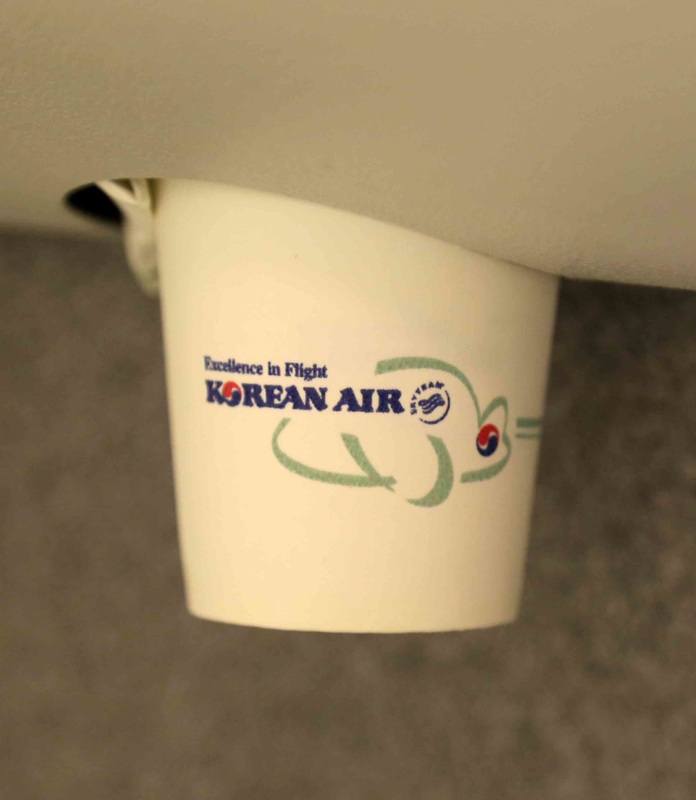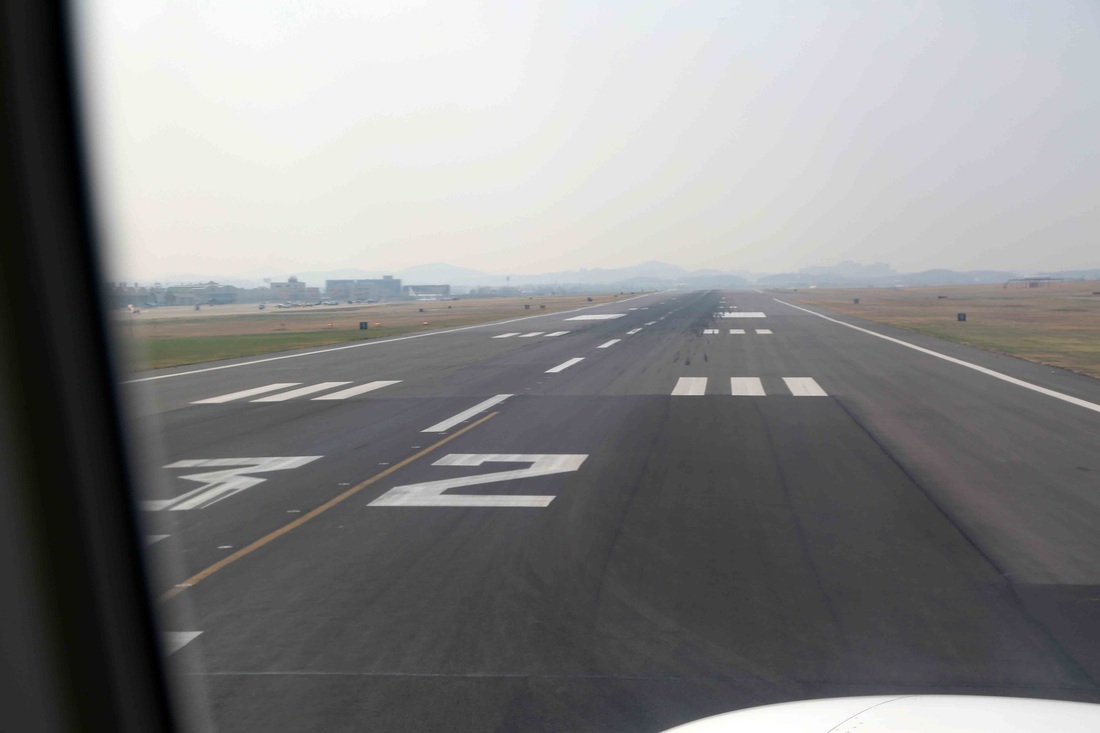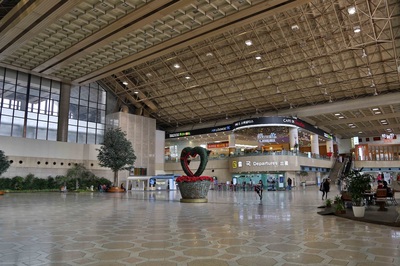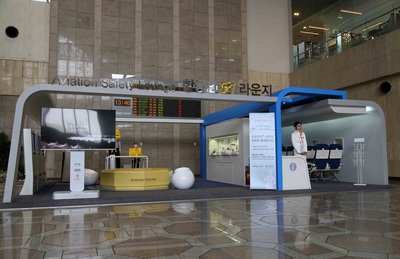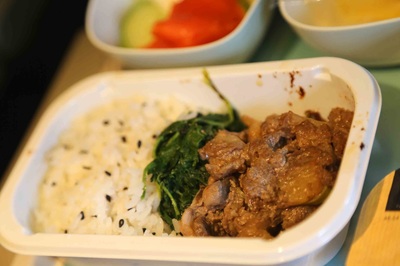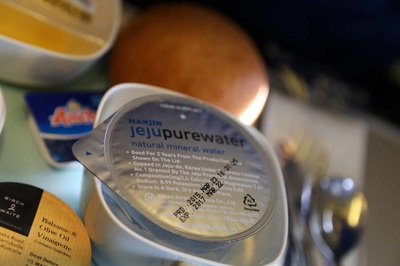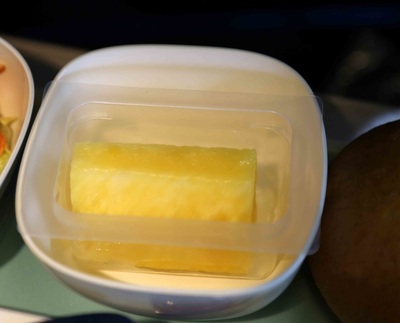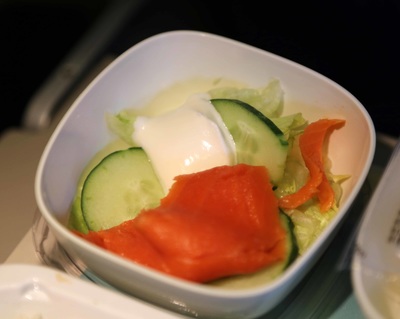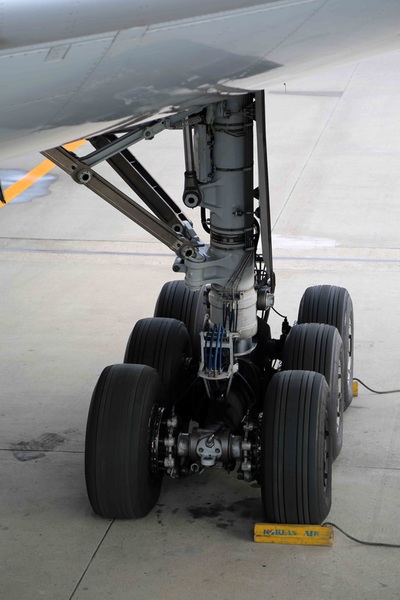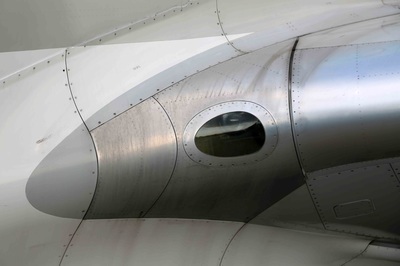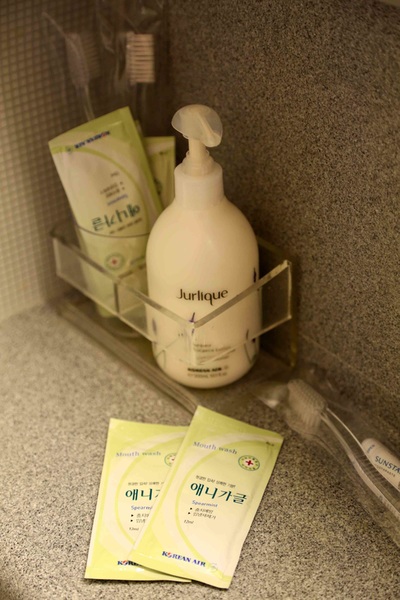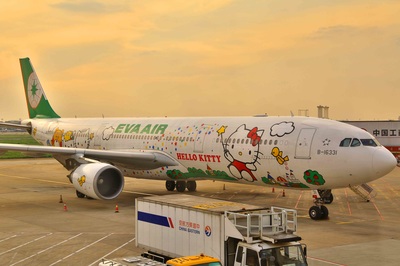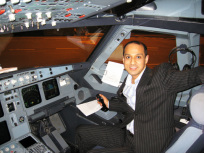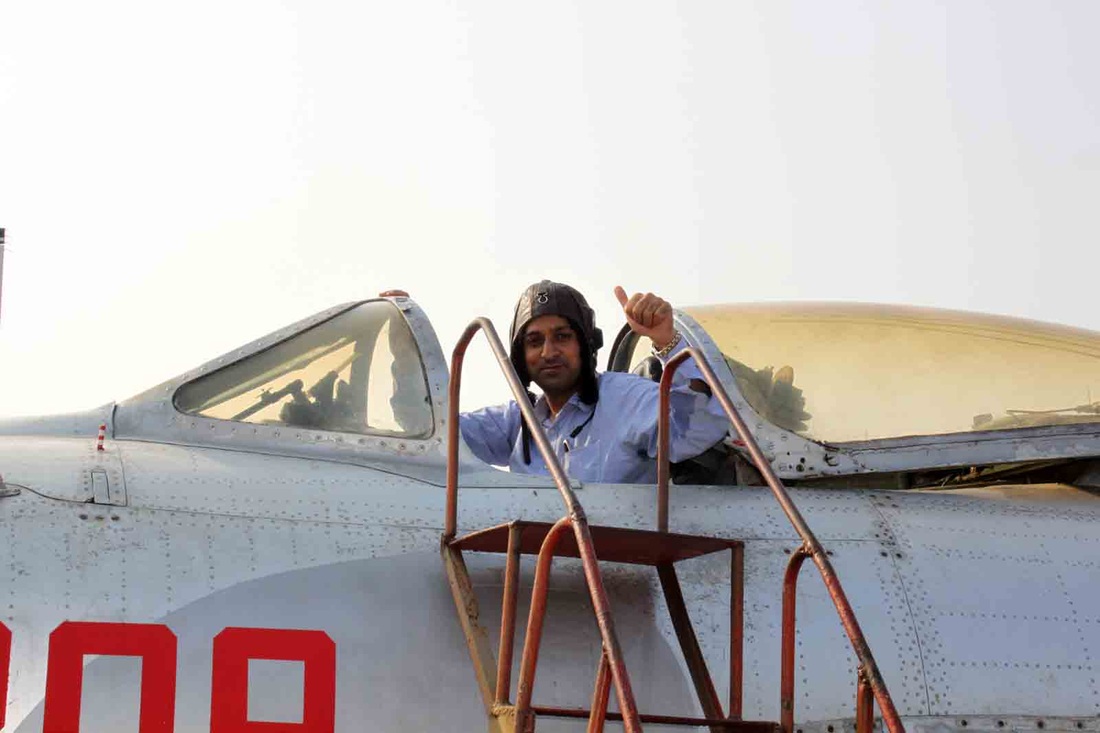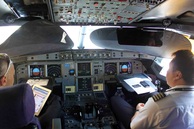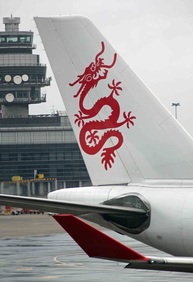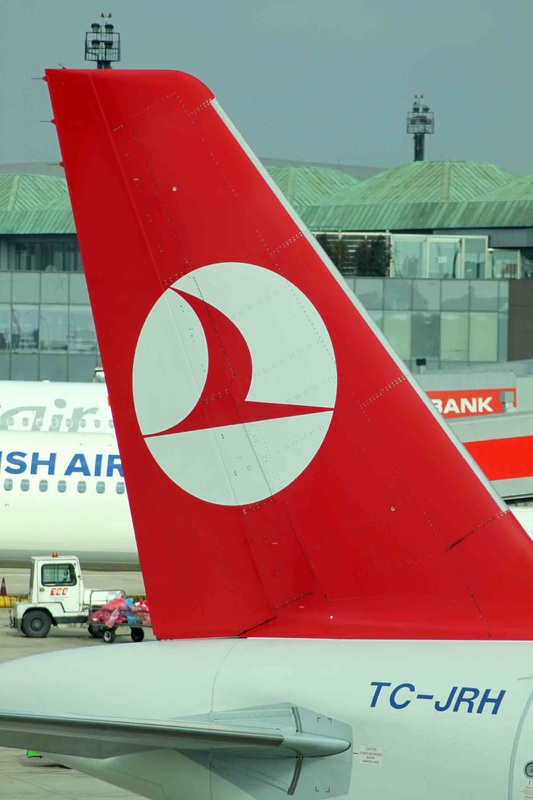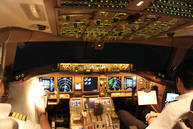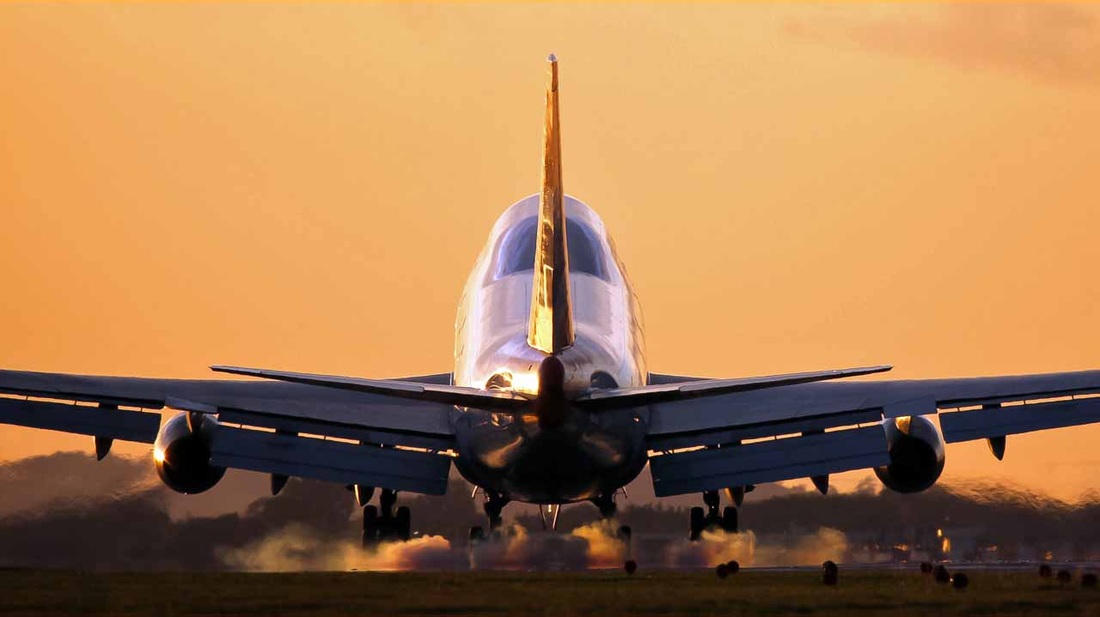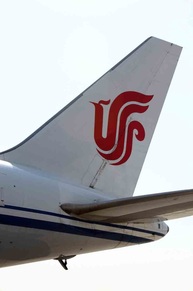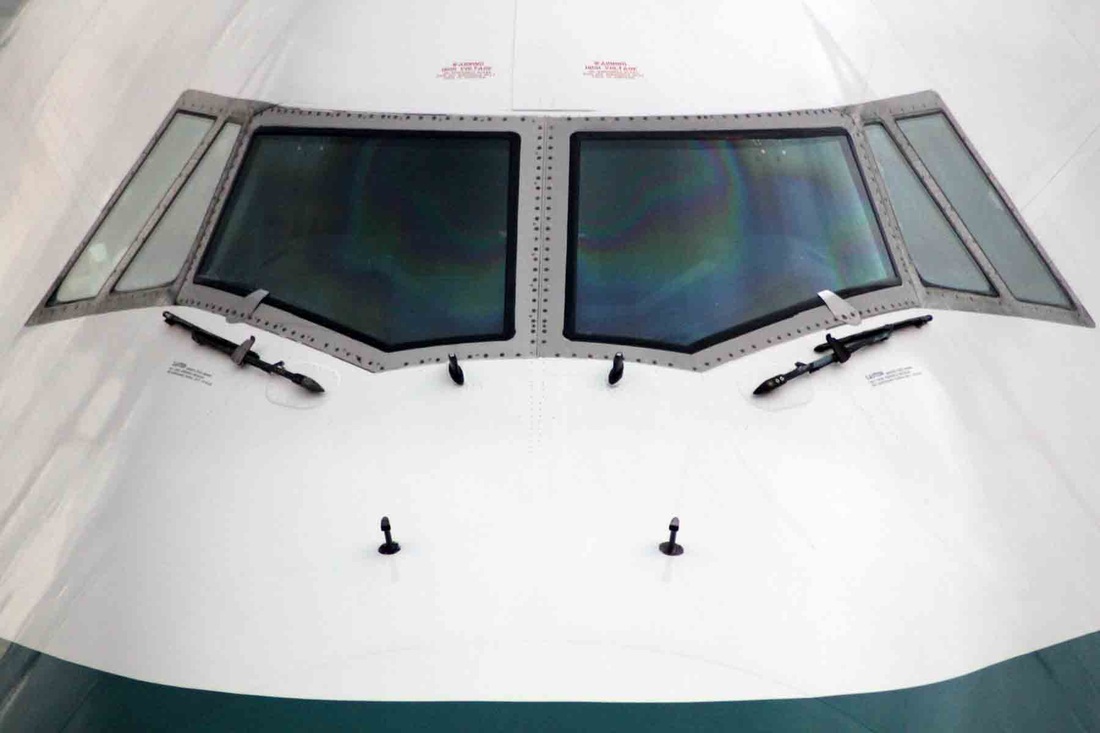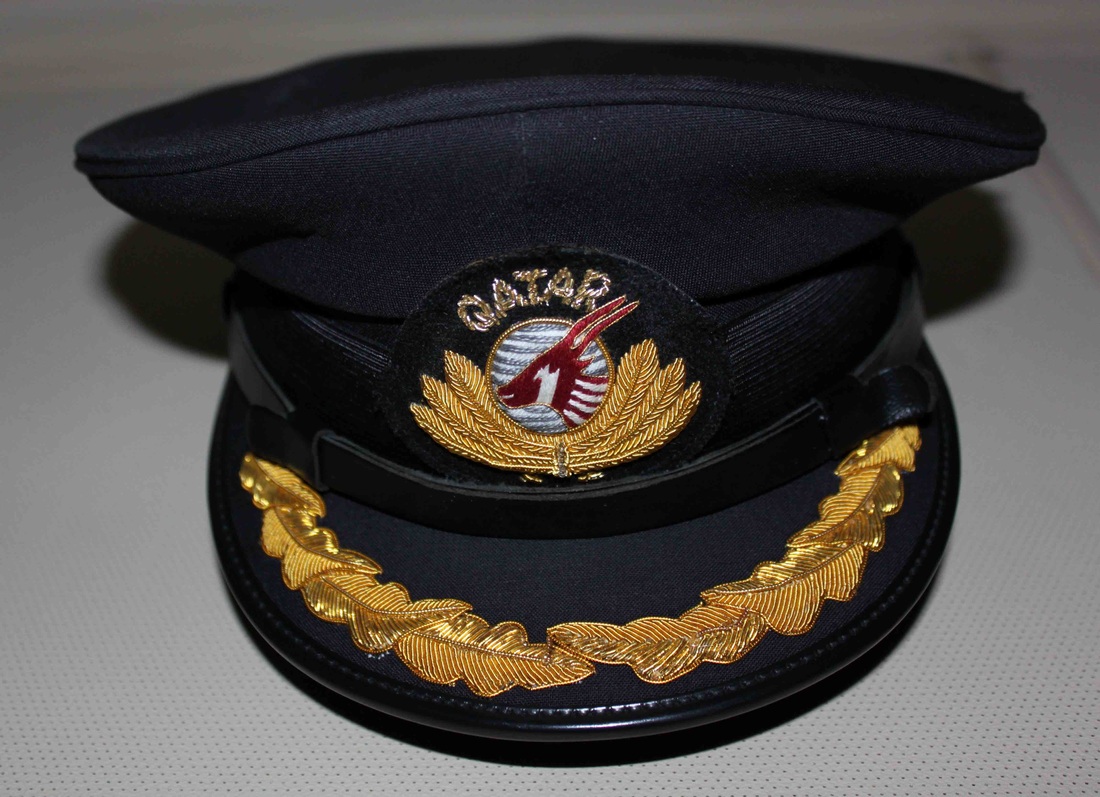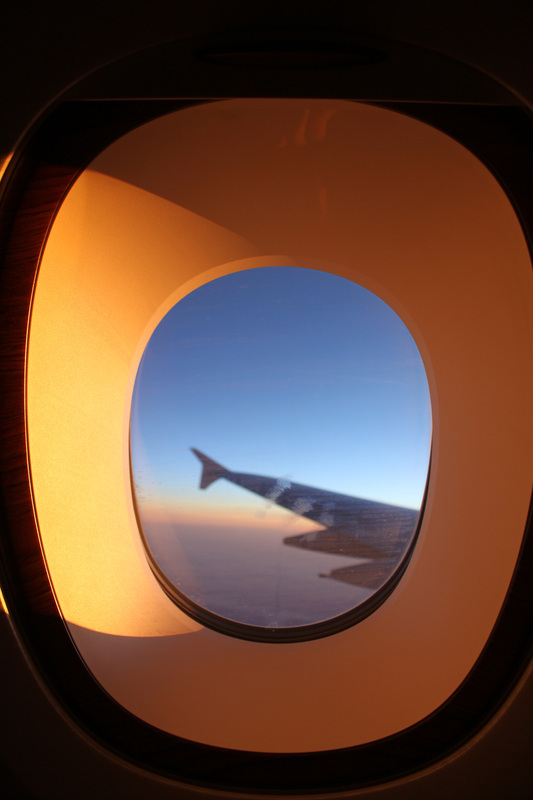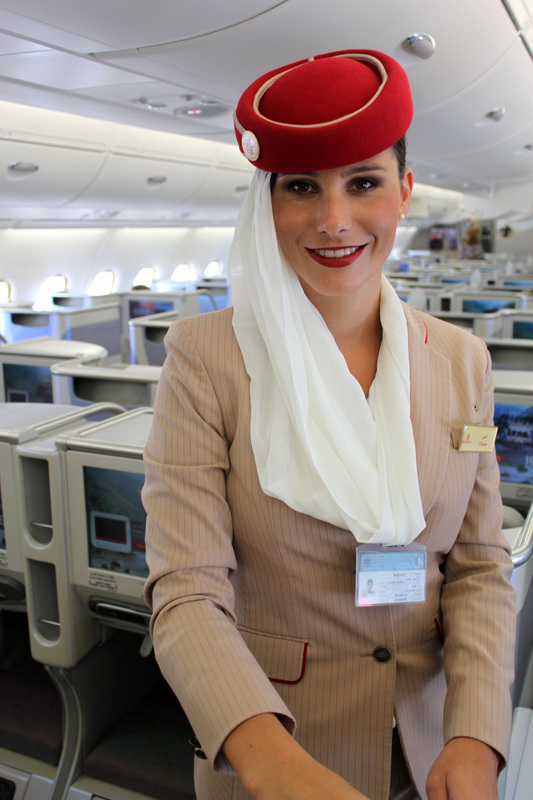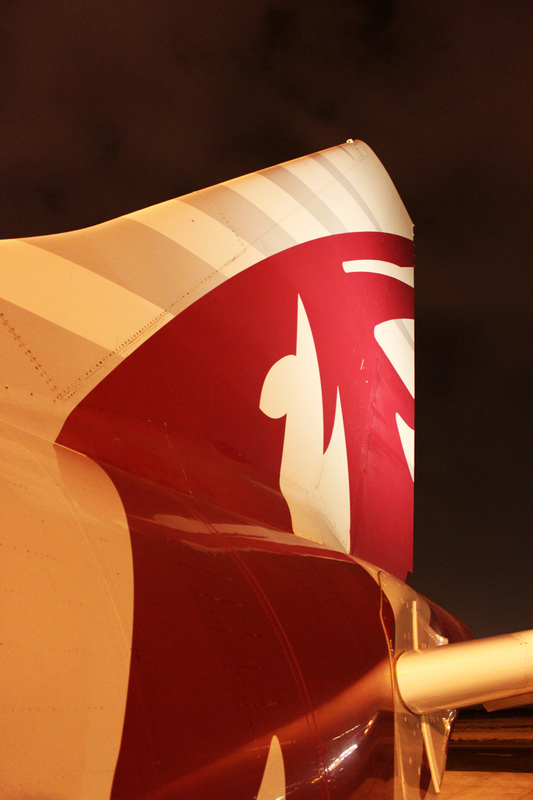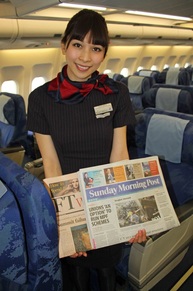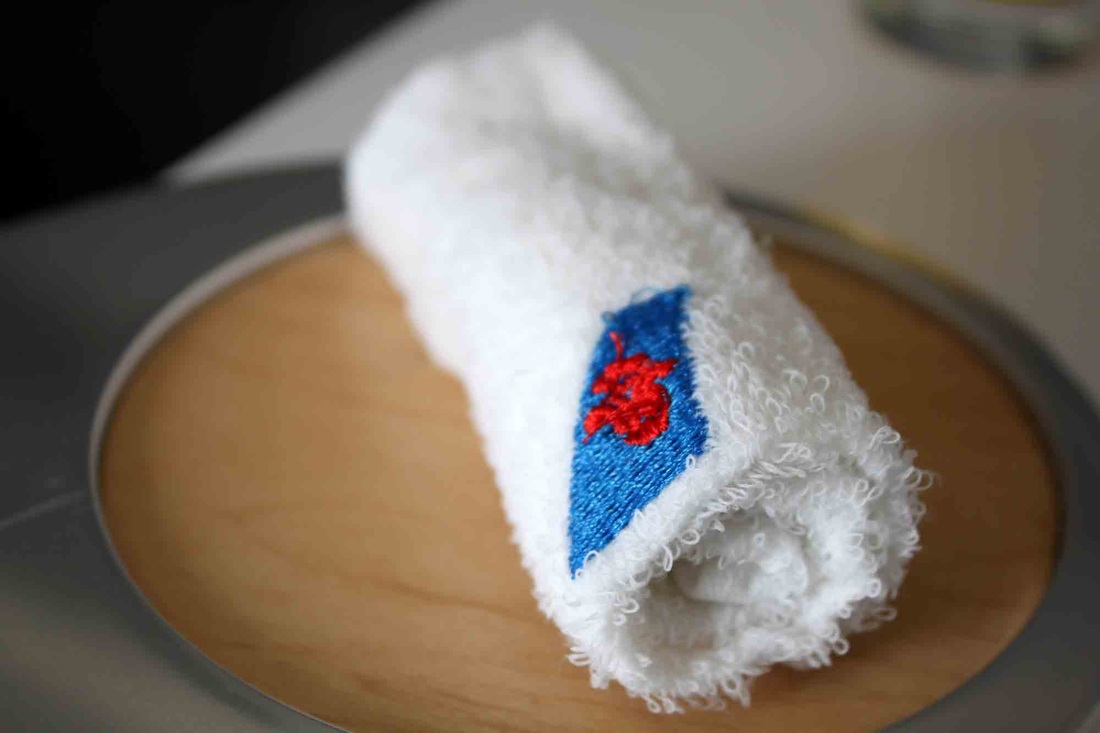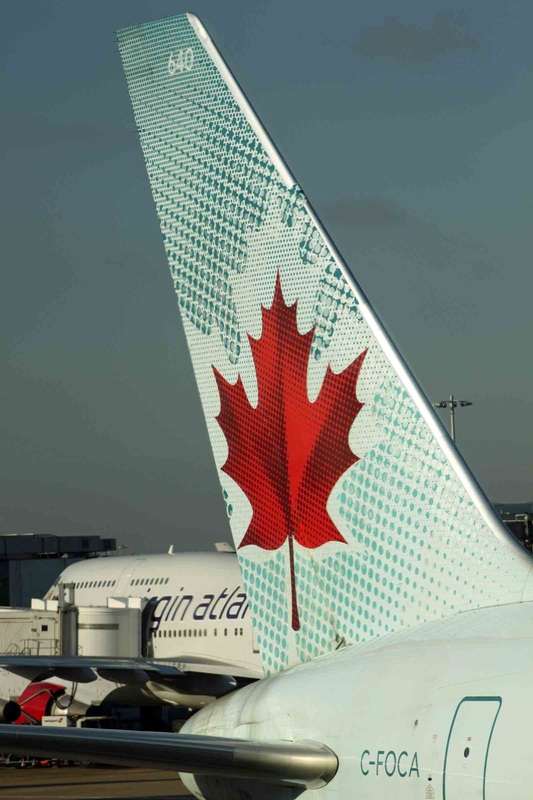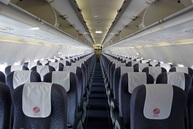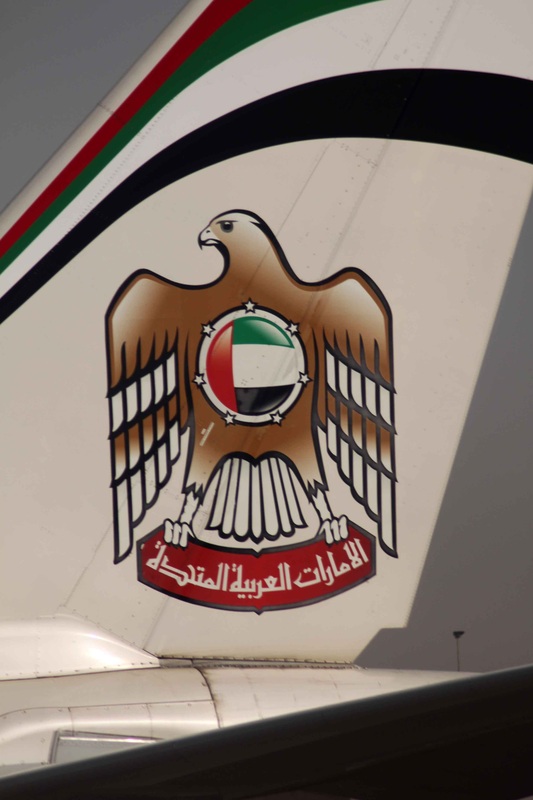|
Korean Air (대한항공) is the national flag carrier of South Korea (Republic of Korea) and is the largest airline in South Korea based on fleet size, international destinations and international flights. The airline serves 127 cities in 44 countries, while its domestic division serves 12 destinations. It is among the top 20 airlines in the world in terms of passengers carried and is also the top-ranked international cargo airline.
At the time of writing, Korean Air operates a fleet of 157 aircraft, including 10 Airbus A380 and 40 state-of-the-art Boeing 737NG aircraft. Korean Air is a founding member airline of SkyTeam, the global airline alliance formed in 2000. The alliance currently consists of 20 member airlines flying to 1,057 destinations in over 179 countries worldwide with 16,270 flights every day. SkyTeam is committed to offering passengers quality service and high-end comforts. This was the first time I flew with Korean Air. I was on the flight from Seoul’s Gimpo Airport to Shanghai Hongqiao International Airport on Korean Airlines’ Boeing 777-200ER to check out their Economy Class seats! This was exactly the same aircraft I flew on when I flew from Shanghai to Seoul Incheon the week before. Route: SEOUL GIMPO AIRPORT (GMP) to SHANGHAI HONGQIAO (SHA) Departure date and time of flight: 15:15, April 2015 Flight number: KE2815 (ICAO call sign: “Korean Air”) Flight duration: Two hours and 10 minutes Class: ECONOMY CLASS Aircraft type: BOEING 777-2B5ER (16 in service) Unit cost of each Boeing 777-200ER: US$284.1 million (2011) Aircraft registration: HL7734 (First flight 22nd July 2005) Engine Type: Two x PW PW4090 Aircraft Serial Number: 34207 LN:528 Frequent flyer program: KYPASS is the frequent-flyer program of Korean Air. "SKYPASS" also refers to the blue card which Korean Air frequent-flyers are given. The motto of SKYPASS is "Beyond your Imagination". Qualification for the highest level is based on lifetime flight miles, requiring a customer to fly one million miles for Million Miler, which is the highest elite status or 500,000 miles for Morning Calm Premium, which comes second. Seat configuration for this aircraft: First Class: Eight flat-bed seats with 180-degree recline in a 1-2-1 configuration Business Class (Prestige): 28 angle-flat seats in a 2-3-2 configuration Economy Class: 225 seats in a 3-3-3 configuration Punctuality of the flight: Departed around ten minutes late, however we managed to arrive on time into a smoggy Shanghai Hongqiao Airport. Any baggage issues: No issues regarding the baggage. For Economy Class, Korean Air have a checked baggage allowance of 23 kg total for all routes excluding transatlantic routes. Therefore, for the China to South Korea route, they have a 23kg luggage policy. All routes have a carry-on allowance of one piece not exceeding 7 kg (50x37x25 cm). Comments on the check-in staff and flight route: The check-in staff were very professional and came across as well-trained. Before the check-in procedure begins, the check-in staff at Gimpo Airport stand in front of all the passengers to welcome them and bow to everyone before formal proceedings of check-in commence. It is a very formal affair, and one that should be adopted in other countries I think. The ethos of customer service is one of the best in the world. The staff are exceedingly helpful and are prepared to go out of their ways to help passengers. Gimpo airport is mostly used for domestic flights, however some flights out to China, Japan and Taiwan are also operated out of here, with the majority of them being with Asiana Airlines or Korean Air. The airport is closer to the city as well. Comments regarding the pre-flight service: Upon embarking the aircraft, passengers in Business Class and Economy Class were offered welcome drinks consisting of fresh orange juice, fresh apple juice, mineral water (champagne, wines in Business Class only). The cabin crew are truly one of the best trained I have met on any other airline. Customer comes first and Korean Air truly define the meaning of a five-star service. Passengers in Economy Class were offered a packet of fresh pretzels packed in Korean Air branded packets, and a choice of drinks from the trolley service. The cabin crew were polite and friendly. Even though this flight was full, the cabin crew paid full attention each and every customer instead of just passing the meal to passengers like they do on some other airlines. I just resorted to drinking plenty of bottled water. Though they may sound very tempting, however, alcohol and coffee are not good to drink during a flight as it just dehydrates you. Water is the best. Comments regarding the first meal: In true Korean Air style, before each meal service in Economy Class, the cabin crew placed a coloured mat (paper mat) on the tray table. There are a few reasons for this. Firstly, the mat is slightly static so it will stop your cup of drink from sliding away if there is turbulence; secondly it will act as a sponge in case you do spill your drink or drop food (keeps everything clean!); and thirdly it’s to give that extra personal service to passengers even in Economy (if Business Class passengers can get a luxury white cloth, then there is no reason why Economy Class passengers cannot get a similar service). The meal tray arrived at around 15 minutes after take-off from Pudong. A tray full of goodies was staring at my eyes. There was only one option for the main meal: Korean spicy beef and rice The food was fresh, delicious and better than what you get on most other airlines in Economy Class. This is why Korean Air is different because they provide a fine dining experience in all classes of travel- one that is easily comparable to going to a five-star restaurant. You get what you pay for, and Korean Air does not fail. Accompanying the main dish was a bowl of freshly cut salad (ham slice (spam?), tomato, cucumber and shredded lettuce all in one action packed bowl!). It’s ridiculously good to have some crunchy salad to accompany a slightly heavy yet tasty dish as I had. Orange juice by Chinese company Bilin was also provided. For dessert, Korean Air provided a bowl of fresh fruit (pineapple slice in juice by Dole), which is a healthier option as opposed to sweets and chocolates that other airlines offer. Traditional Korean Gochujang Chili Sauce, branded with the Korean Air logo, was provided with the meal. It is a savoury, spicy, and pungent fermented Korean condiment made from red chili, glutinous rice, fermented soybeans, and salt. Free flowing bread from the basket with butter was also available (you don’t get this on other airlines). In Economy Class, Korean Air still provides proper steel cutlery to the passengers. Comments regarding the after meal drinks and in-flight snacks: Plenty of fresh water, coffee and tea are offered in lovely Korean Air branded paper cups (that can be recycled) were offered. Comments regarding the second meal: None. This was a short flight so there was no second meal. Comments on the in-flight entertainment system: Pocket sized earphones were offered in the Economy Class cabin. This aircraft offers personal seatback Audio and Video on Demand (AVOD) TV's in both classes on service. AVOD allows passengers to select any channel at any time. First Class seats are equipped with a 17-inch LCD monitor, Prestige Class seats are equipped with a 10.4-inch LCD monitor, and Economy Class seats are equipped with an 8.4-inch LCD monitor. The good thing is that all First and Prestige Class seats as well as every 2-4 Economy class seats have an 110v AC power port. An adapter is not required. Comments of professionalism of the cabin crew: The cabin crew were very hospitable, and proud to work for Korean Air. There was a genuine smile on every crew members face and you could tell that they really enjoyed their job. There was a real sense of teamwork in the cabin. As a customer (or passenger) it is easy to tell if the cabin crew are not getting along with each other (it does happen like any other job!), and on this flight I could see that everyone was in a joyous mood. If there was something I wanted or a question I had, then no one objected to it. Instead, they tried their best to help me as much as they could. The senior purser was just gem of a person. The whole flight experience was like magic, and everything seemed to go smoothly. So, yes the world can be ideal sometimes. While the vast majority of the cabin crew for Korean Air are exclusively native Korean, the airline does employ foreigners for some destinations where English may not be the first language (such as China, Russia and Japan for example). Italian designer Gianfranco Ferré created the airline’s current uniform, which has practicality in mind for the flight attendants' active cabin duties. The uniform attains harmony between modern global fashion appeal while integrating the foundation of Korea's traditional and inherent beauty. It features elegance and refinement while being comfortable. Most importantly of all the uniform distinguishes ergonomic design and use of practical and supple fabrics. Comments on the interior of the aircraft (including seat comfort): Korean Air have 225 Economy Class seats on their Boeing 777-200 aircraft with a 3-3-3 configuration (better than most other airlines that have ten seats across each Economy Class row). Each seat has a generous pitch of a 34 inch recline and is 18 inches wide. This is far better than most other airlines around the world. All the seats have a PTV displayed at the back of each seat, and a reading light. The one thing that Korean Air can perhaps improve is to have the hand rests to be reclined 90 degrees instead of the 45 degrees. The hand rests for the seats don’t go backwards completely. Even in Economy Class, the toilets are equipped with toothpaste and toothbrush (on this flight at least). Korean Air logo and livery: As stated on their website “The symbol and logo of Korean Air reflects our desire to be a leading airline in the world's aviation industry.” Korean Air logo consist of the colors of the national flag of South Korea. The symbol of Korean Air is designed to promote its status as a national carrier. Based on the concept of Yin and Yang that is incorporated in the national flag, the mark symbolizes the dynamic strength of the company. The white shape positioned between the red and blue represents a propeller in motion, symbolizing its powerful driving force and the pioneering spirit of the company. The single color version is designed with several horizontal lines in the upper part to add a clear distinction between upper and lower parts in terms of hue. The logo is derived from the Taegeuk symbol found on the country’s flag. In 1984 South Korea’s national airline began to paint their aircraft with a light blue top, white underside and silver cheat line in the middle. The light blue gives the feeling of being fresh, spacious and new. The word mark is designed with a combination of the logo and the symbol to express Korean Air’s corporate philosophy and identity. This, being the most important aspect of Korean Air's corporate design, must be used consistently and homogeneously. If the background color is lighter than 40 percent in ink concentration level, the letters must be dark (navy blue) whereas if the background is darker than the given level, the letters must be light (white). Overall rating 1-10 (worst-best): 10 Comments are closed.
|
About Airline PRThis is a special section on Airline Branding, and Airline Public Relations written by me on all the flights I have been fortunate enough to have been on. These are not records taken from somewhere else, but are actual flights I have been on. Most of the flight trips are officially sponsored by the airline companies in order to promote their certain routes, and aircraft. Airline promotion and PR related work in the aviation industry is one of my expertise. Watch exclusive videos below taken in the cockpit of a Boeing 777-300ER in-flight over Chinese Airspace.
Special thanks goes to Turkish Airlines B777-300ER Cockpit Video 1B777-300ER Cockpit Video 2Archives
March 2024
Airlines Reviewed
All
Proud media partner of QATAR AIRWAYS |

